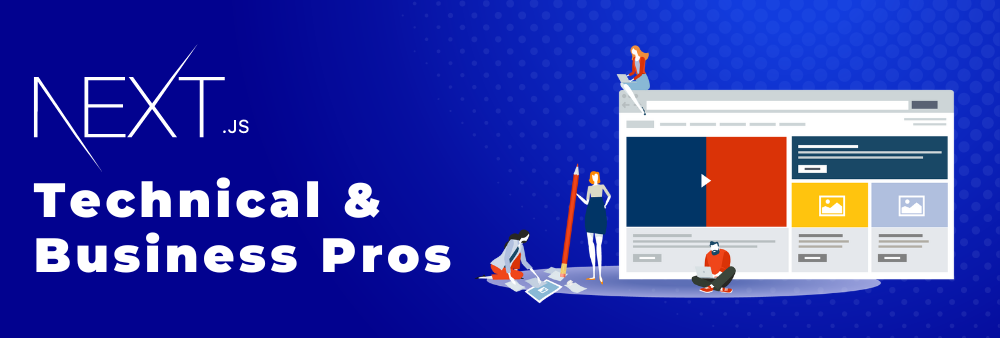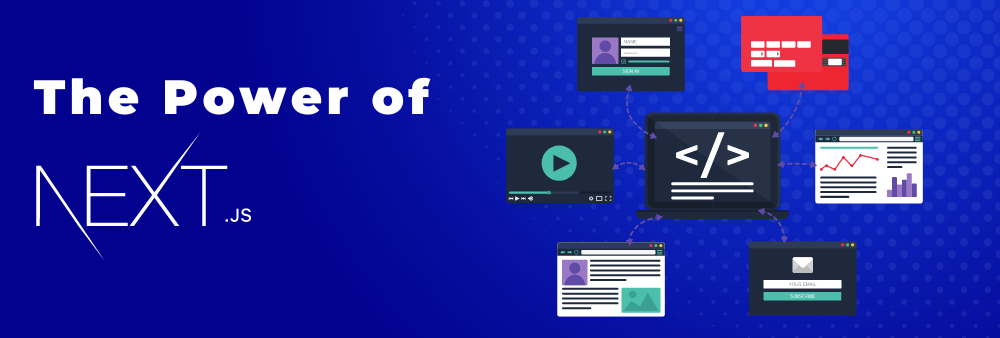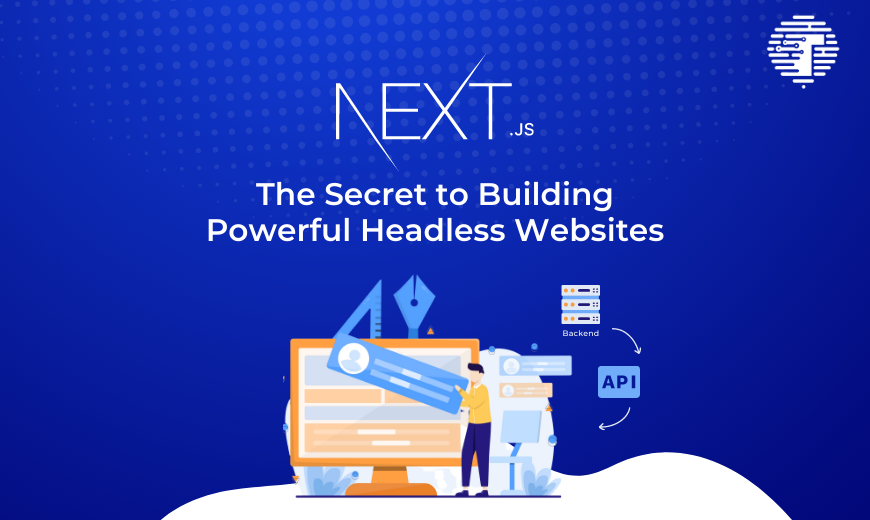The digital landscape has undergone a radical transformation in recent years. As companies from every industry race to captivate their audiences, they increasingly rely on personalized content delivered seamlessly across multiple touchpoints throughout the customer journey.
The rise of headless CMS (Content Management System) solutions has provided organizations with unparalleled agility, enabling swift storefront modifications. In fact, a staggering 77% of organizations employing headless CMS report experiencing these benefits firsthand.
At the forefront of this revolution, we find Next.js, a powerful front-end framework that pairs beautifully with headless CMS back-ends like WordPress, Strapi, Shopify, or Storyblok.
Join us as we dive into the world of headless CMS, explore the reasons behind its surging popularity, and reveal why Next.js is the ultimate choice for developing headless websites that deliver unmatched user experiences.
What is a Headless CMS?
Simply put, a headless CMS is a content management system that distinctly separates content management from the front-end or display layer of a website. By utilising a content API (Application Programming Interface), it enables seamless content sharing across various platforms such as websites, mobile applications, e-commerce stores, and booking platforms.
As digital experiences continue to evolve, headless CMS solutions are becoming the go-to choice for businesses seeking to deliver consistent, engaging content across multiple channels and devices. The adaptability and efficiency of a headless CMS make it a preferred choice for organizations that prioritize delivering personalized and responsive user experiences.
Benefits of using headless CMS for websites
A headless CMS allows administrators and creators to efficiently manage and update content through an easy-to-use, dedicated back-end system, without concerning themselves with front-end aesthetics. This separation of the content layer from the presentation layer provides numerous benefits, including increased flexibility, faster and easier content distribution, and enhanced performance.
Additionally, the separation of the front-end and back-end enables more flexibility in design and development, as well as the ability to easily integrate with third-party services.
Finally, headless CMS architecture typically leads to faster page load times and improved website performance, resulting in a better user experience.
Despite all these advantages, just over 50% of companies are still using monolithic CMS according to Storyblok, with a staggering 48% of businesses using 2-3 CMS instead of optimising into using one system.
We wrote an article about Strapi vs. WordPress.
What is Next.js?
Next.js is one of the most popular JavaScript frameworks.It is a React-based framework that offers developers a collection of tools and resources for building cutting-edge and high-performing web applications.
Next.js has gained significant popularity in recent years by the number of developers adopting it. Statista reported that 16.67% of developers worldwide use the framework in 2023.
Let’s dive deep into why we should build Headless CMS with Next.js.
Why Should Use Next.js for Headless CMS Website

If you’re considering building a headless website and looking for a reliable framework to use, Next.js is an excellent choice. It provides a bunch of amazing features and tools that enables developers to create dynamic, scalable and fast web applications.
Technical pros
- Simplified development: Next.js provides developers with a set of tools and features that make it easy to build and maintain complex web applications. With Next.js, developers can focus on building the front-end of their headless website without worrying about the back-end;
- Seamless Integration with Headless CMS: Next.js is a flexible framework, which means that developers can use it to build a wide variety of web applications. It’s easy to integrate with different headless CMS platforms like Strapi, and Storyblok. This allows developers to easily manage and deliver content to the front-end and customise it to fit your specific needs;
- Large community support: Next.js has a large and active community of developers who contribute to the framework, ensuring that it remains updated and maintained. This means that you can rely on Next.js for long-term support and stability.
Business pros
- Easy to manage content: When using a headless CMS with Next.js, managing your website’s content becomes easier. Headless CMS allows you to separate content creation and management from website development, giving you more flexibility and control over your website’s content;
- More SEO friendly: By using server-side rendering, Next.js makes it easier for search engines to crawl and index your website, which can improve your search engine rankings;
- Better user experience: Next.js comes with built-in optimisation features like code splitting and prefetching, which can help your website load faster and provide a better user experience;
- Cost-effective: Since Next.js is an open-source framework, it’s free to use, making it a cost-effective choice for building your website. Additionally, headless CMS platforms offer affordable pricing plans, making it easier to manage and maintain your website’s content.
Challenges of Next.js
While Next.js has many advantages for building headless CMS websites, there are also some potential challenges to consider.
Technical challenges
- Next.js has a page-based routing system, which can be limiting for complex applications. However, the issues with routing are being worked on, and they’re gradually getting fixed;
- Next.js is opinionated, meaning that developers have to follow specific guidelines and do things the way Next.js dictates. This can be seen as both a pro and a con, as it ensures consistency and quality but may also limit creativity and integration options for more complex projects;
- Next.js is that it has fewer plugins compared to other frameworks like Gatsby.js, making it less adaptable for specific needs. However, this can also be seen as a positive, as it encourages developers to write clean, custom code.
Business challenges
- Find Experienced Developers
While React is a very common JavaScript library that powers a large portion of modern web applications, it can be challenging to find experienced developers.
Many people can learn the basics of React but mastering it takes time and effort. This can make it risky to hire Next.js developers through freelancing websites as there may be many inexperienced developers in the market.
At Trienpont International, we have hands-on experienced developers building complex applications and websites, providing you with the flexibility and customisation you need to create a dynamic and engaging website experience for your users.
What can you Build With Next.js?

With Next.js, you can build a wide range of modern and fast web applications, including:
- Static websites: Next.js can generate static websites which can be served from a content delivery network (CDN) for fast load times;
- E-commerce websites: Next.js can be integrated with popular e-commerce platforms, such as Shopify and Magento to create high-performance online stores;
- Progressive web apps (PWA): Next.js can be used to build PWAs, which are web applications that provide an app-like experience on mobile devices;
- Multi-page applications: Next.js can be used to build complex multi-page applications that require a lot of user interaction and dynamic content;
- Serverless applications: Next.js can be used to build serverless applications that run on cloud platforms, such as AWS Lambda or Google Cloud Functions, which can be more cost-effective and scalable than traditional server-based applications.
Should You Build a Headless CMS with Next.js?
Building a website with a headless CMS and Next.js offers many benefits, including simplified development, seamless integration, better flexibility, easy management, and SEO optimisation.
It’s an excellent choice for websites that require dynamic content and frequent updates across various platforms. However, it’s crucial to carefully consider the specific needs and goals of the project and ensure that the development team is experienced in Next.js and headless CMS implementation.
If you’re looking to build a website with these technologies, contact Trienpont International, a company with over a decade of experience in building digital solutions.





